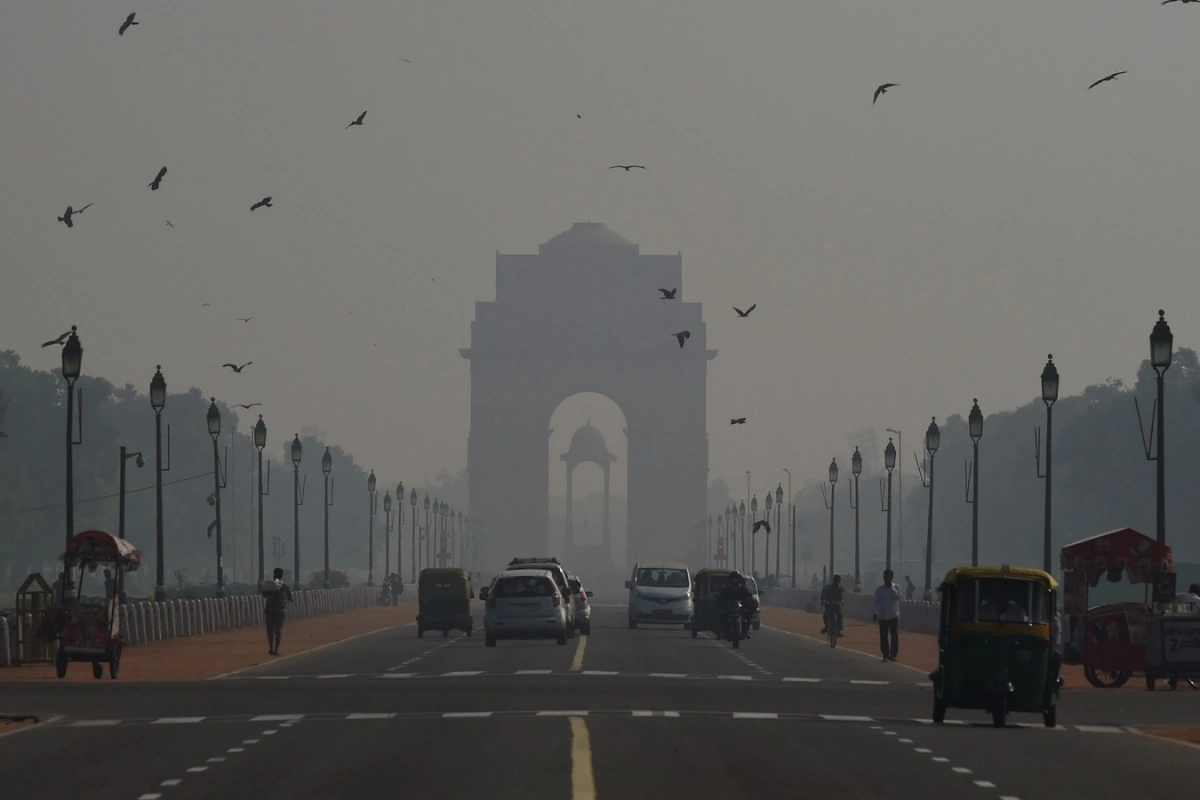The national capital saw pollution levels go up sharply as the Air Quality Index (AQI) went beyond 370, reaching the “very poor” to “severe” category. Smog layers were so dense that they covered the city skyline, and in several places, visibility was less than a kilometer. Most of the city remained enveloped in a grey haze both during the morning and the evening hours, and this haze caused the traffic and daily routines to get disturbed.
Delhi’s air quality index (AQI) was on the verge of “severe” with dense smog reducing visibility.
Places such as Wazirpur, RK Puram, Rohini, and Bawana recorded an AQI of over 400, making the air extremely harmful to human health. NCR areas like Noida, Gurugram, and Faridabad were also similarly affected with very bad air quality. Weak winds and high moisture levels trapped the pollutants near the earth’s surface, thus making the smog over Delhi even more severe.
Delhi Pollution Reaches New Heights, Toxic Smog Covers Capital, Health Risks and Precautions Explained
The pollution explosion in Delhi is mostly due to vehicles on the roads, dust from construction sites, smoke from factories, and crop fires in the states around. It is typical for early winter that slow wind movement and temperature falls cause pollutants to remain suspended, thus deteriorating air quality. Since there is neither rain nor strong wind, the smog will most probably stay for the next few days.
Delhi Pollution Reaches New Heights, Toxic Smog Covers Capital, Health Risks and Precautions Explained
Medical specialists advise the public to shield themselves against this poor air, as it may cause serious respiratory and cardiovascular diseases. Children, elderly people, and asthma patients are the most at risk. In order to be out of danger, people living there are advised to put on N95 masks, refrain from outdoor activities during peak hours, and run air purifiers in their homes. Also, by restricting the use of vehicles and not burning things in the open, one can contribute to lessening the pollution problem locally.
Delhi Pollution Reaches New Heights, Toxic Smog Covers Capital, Health Risks and Precautions Explained
Officials have requested citizens to monitor the AQI regularly and abide by the health guidelines. It has been suggested that schools and workplaces should restrict outdoor activities when air quality is poor. Due to a lack of significant changes in weather expected anytime soon, people are resorting to emergency measures to deal with the suffocating smog.
